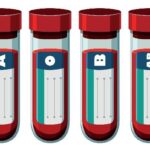Gabapentin is a medication primarily used to treat seizures and nerve pain. Understanding how to take it properly is crucial for its effectiveness and to minimize potential side effects. A common question that arises is: Should You Take Gabapentin With Food? Let’s delve into the details.
Gabapentin Dosage and Forms
Before addressing the food question, it’s important to understand the basics of gabapentin. Gabapentin is available in various forms and dosages:
- Capsules: Typically available in 100mg, 300mg, and 400mg strengths.
- Tablets: Available in 600mg and 800mg strengths.
- Liquid: The liquid form usually contains 100mg of gabapentin per 2ml. Always verify the concentration on the label to ensure accurate dosing.
The dosage varies depending on the condition being treated and the individual’s response to the medication.
Gabapentin Dosage for Epilepsy and Nerve Pain
The typical dosages for gabapentin are as follows:
- Epilepsy:
- Adults and children over 12 years: 900mg to 3,600mg daily, divided into three doses.
- Children aged 6 to 12 years: Dosage varies based on their weight.
- Nerve Pain:
- Adults: 900mg to 3,600mg daily, divided into three doses.
Doctors usually start with a low dose and gradually increase it to minimize side effects. This titration process helps find the optimal dosage that provides relief without causing significant adverse reactions.
Gabapentin: With or Without Food?
The good news is that you can take gabapentin with or without food. However, consistency is key. It is generally recommended to choose one method (with or without food) and stick to it each day.
Taking gabapentin at the same time each day, relative to meals, helps maintain consistent blood levels of the medication, which can improve its effectiveness. If you experience stomach upset when taking gabapentin on an empty stomach, taking it with food may alleviate this issue. Conversely, if you find it easier to remember to take your medication on an empty stomach, that is also acceptable.
How to Take Gabapentin
Here are some general guidelines on how to take gabapentin:
- Swallowing: Gabapentin capsules and tablets should be swallowed whole with a glass of water or juice. Do not chew them.
- Spacing Doses: Try to space your doses evenly throughout the day. For example, you can take it in the morning, early afternoon, and at bedtime.
- Liquid Form: If you are taking the liquid form, use the provided plastic syringe or spoon to measure the dose accurately. Do not use a kitchen spoon, as it may not provide an accurate measurement.
Duration of Gabapentin Treatment
The length of time you need to take gabapentin depends on the condition being treated:
- Epilepsy: Long-term treatment is often necessary to maintain seizure control.
- Nerve Pain: Treatment may continue for several months or longer after the pain has subsided to prevent recurrence.
What to Do If You Miss a Dose
If you forget to take a dose of gabapentin, take it as soon as you remember. However, if it is within two hours of your next scheduled dose, skip the missed dose and continue with your regular dosing schedule.
It is crucial not to take two doses at the same time or take an extra dose to compensate for the missed one. For individuals with epilepsy, consistent dosing is particularly important to prevent seizures. Setting an alarm can serve as a helpful reminder.
Overdosing on Gabapentin
Taking too much gabapentin can lead to unpleasant side effects.
Urgent Advice: When to Seek Medical Help
Contact emergency services or seek immediate medical attention if you experience any of the following symptoms after taking more than your prescribed dose of gabapentin:
- Dizziness or sleepiness
- Double vision
- Slurred speech
- Diarrhea
- Fainting
It’s crucial to bring the medication packaging, any remaining medication, and a list of other medications you are taking when seeking medical help.
Stopping Gabapentin Safely
It’s crucial not to stop taking gabapentin abruptly, even if you feel better. Suddenly stopping gabapentin can lead to serious problems, especially for individuals with epilepsy.
If you have epilepsy, abruptly discontinuing gabapentin can cause seizures that won’t stop.
For individuals taking gabapentin for any reason, stopping suddenly can trigger a withdrawal syndrome with symptoms such as:
- Anxiety
- Difficulty sleeping
- Nausea
- Pain
- Sweating
To prevent withdrawal symptoms, your doctor will gradually reduce your dose over time.
Conclusion
In summary, whether you take gabapentin with or without food is a matter of personal preference and consistency. Maintaining a consistent approach and following your doctor’s instructions are key to maximizing the benefits of this medication. Always consult with your healthcare provider if you have any concerns or experience any unusual side effects. They can provide personalized guidance based on your specific health needs and conditions.
